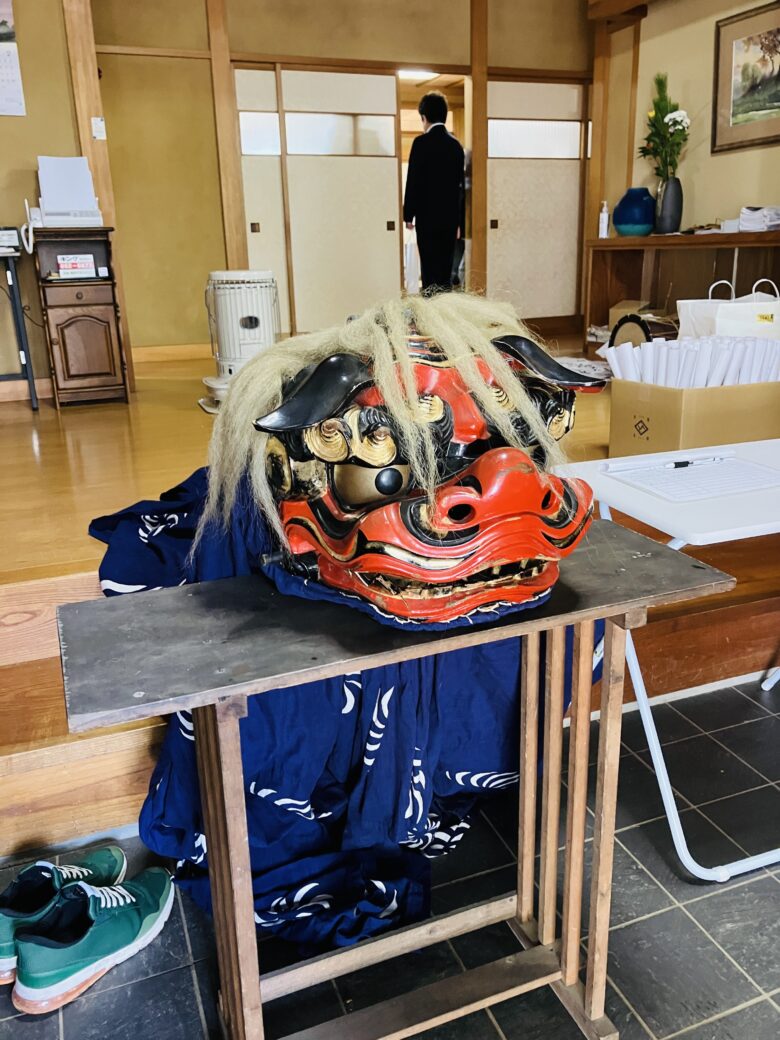歳旦とは1月1日の朝のことを指し、歳旦祭とは、新年の訪れを喜び、皇室の弥栄と国家の安泰を祈るとともに、国民の繁栄、五穀豊穣、世界平和など、1年間の加護を祈る行事のことです。
厳密には、皇居で行われる行事ですが、各地の神社でも年の初めの恒例祭事として行われており、日吉八幡神社で行われた歳旦祭に参加してきました。
その後、獅子舞が披露されました。獅子舞は、東〜東南アジアに見られる伝統芸能で、頭に獅子頭を付けて衣装を身にまとい、祭囃子にあわせて獅子が舞い踊るものですが、日本では頭を噛んでもらうことがよくあります。これは、その人についた邪気を食べてくれて、厄除けの効果があり、1年間幸せに過ごせると言われているからだそうです。
日吉八幡神社は、秋田市役所のすぐ近くにある神社で、旭川以西の商人の町である外町の総鎮守でもあります。ご縁あって行事に参加させていただいておりますが、日本人として日本の信仰を見つめ直す良い機会になっています。
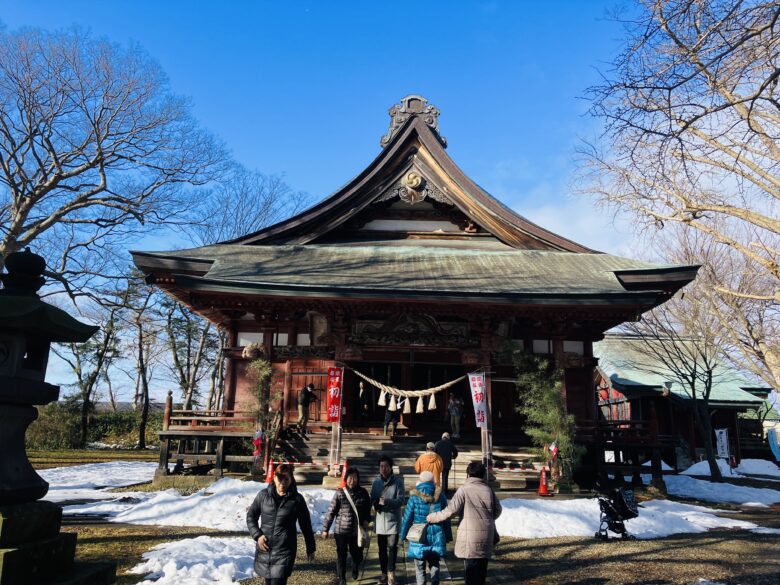
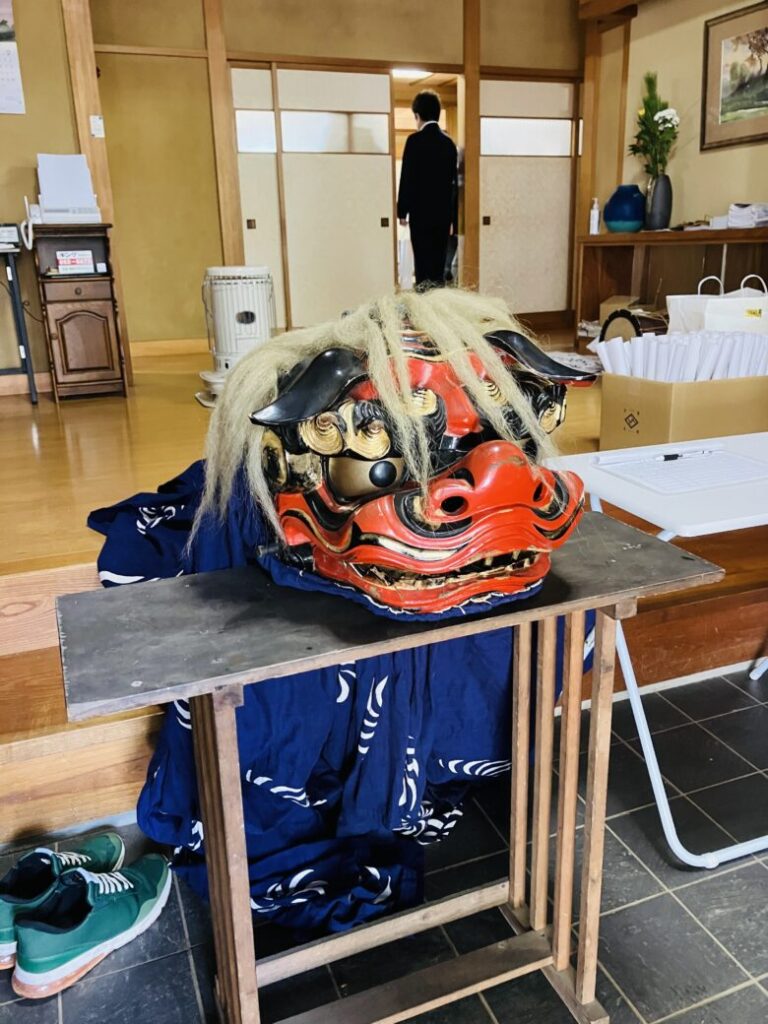
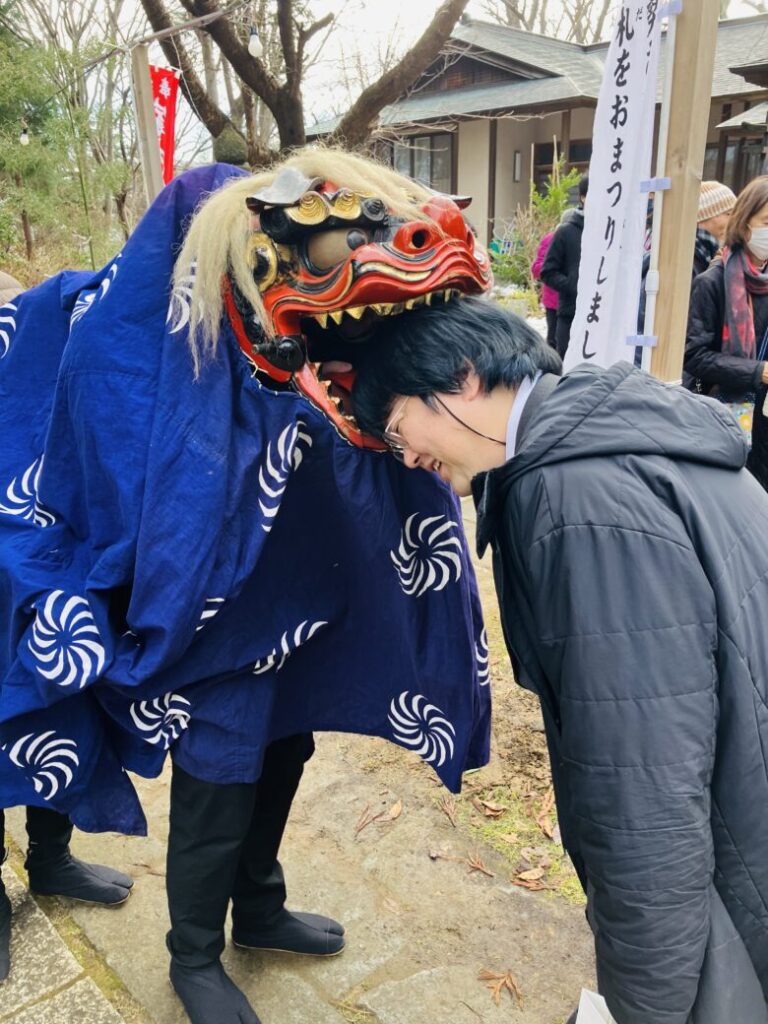
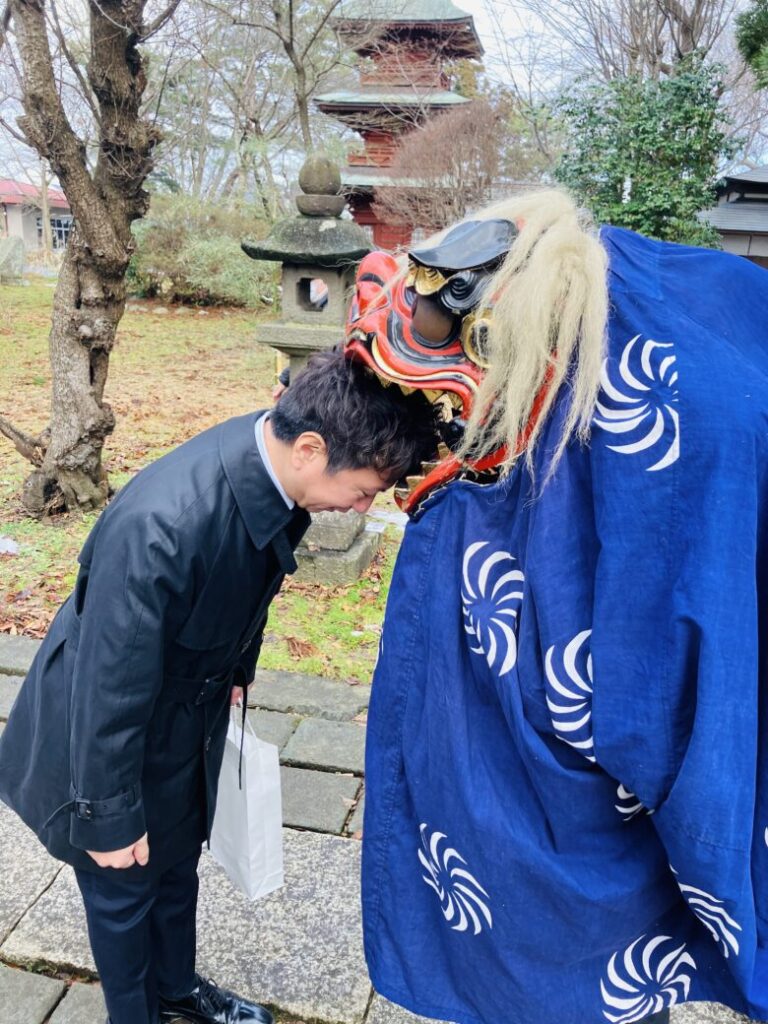
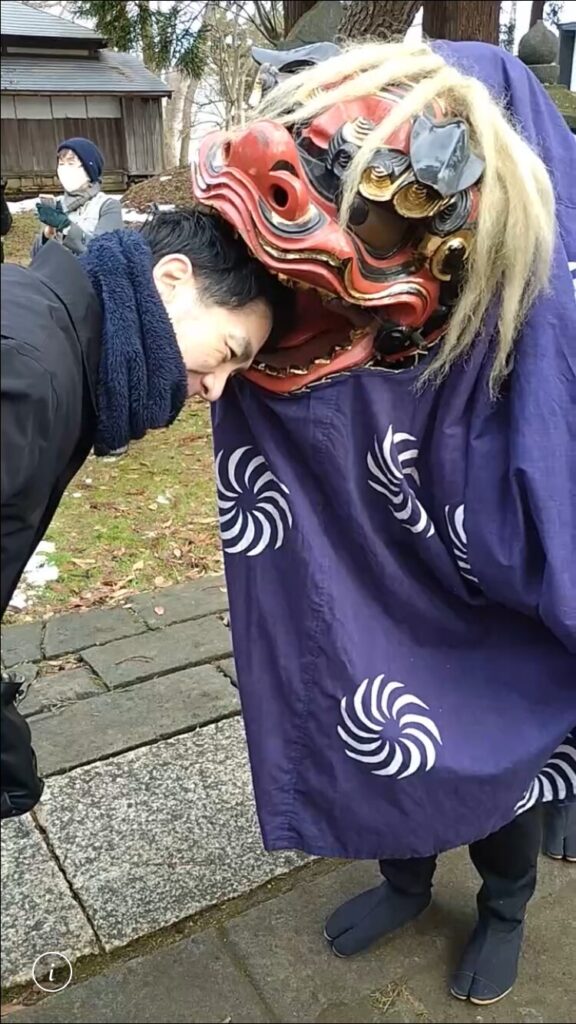
【English】
I participated in the New Year’s festival (Saitan-sai) at the Hie Hachiman Shrine. “Saitan” refers to the morning of January 1st, and Saitan-sai is a ceremony that celebrates the arrival of the new year. It involves praying for the prosperity of the imperial family, the safety of the nation, the well-being of the people, abundant harvests, and world peace throughout the coming year.
While the official ceremony takes place at the Imperial Palace, similar rituals are conducted at various shrines across the country as a traditional New Year’s event. I attended the Saitan-sai held at the Hie Hachiman Shrine.
Later, Shishimai (a lion dance) was performed. The lion dance is a traditional performance seen in East to Southeast Asia. Dancers wear a lion head and costume, and the lion dances to festival music. In Japan, it is common for the lion to “bite” the heads of participants. This is believed to consume any negative energy attached to the person, providing protection from misfortune, and it is said to lead to a happy and prosperous year.
Hie Hachiman Shrine is located near the Akita City Hall, serving as the main Shinto shrine for the merchant district of Sotomachi west of the Asahi River. I have had the opportunity to participate in events at this shrine, and it provides a valuable opportunity for me, as a Japanese person, to reflect on the beliefs of Japan.
【Español】
Participé en el festival de Año Nuevo (Saitan-sai) en el Santuario Hie Hachiman. “Saitan” se refiere a la mañana del 1 de enero, y Saitan-sai es una ceremonia que celebra la llegada del nuevo año. Involucra orar por la prosperidad de la familia imperial, la seguridad de la nación, el bienestar de la gente, cosechas abundantes y la paz mundial durante el próximo año.
Mientras que la ceremonia oficial tiene lugar en el Palacio Imperial, rituales similares se llevan a cabo en varios santuarios de todo el país como un evento tradicional de Año Nuevo. Asistí al Saitan-sai celebrado en el Santuario Hie Hachiman.
Más tarde, se realizó Shishimai (una danza de leones). La danza de leones es una actuación tradicional vista en Asia Oriental y Sureste Asiático. Los bailarines llevan una cabeza de león y un disfraz, y el león baila al ritmo de la música festiva. En Japón, es común que el león “muerda” las cabezas de los participantes. Se cree que esto consume cualquier energía negativa asociada con la persona, brindando protección contra la desgracia, y se dice que lleva a un año feliz y próspero.
El Santuario Hie Hachiman está ubicado cerca del Ayuntamiento de la Ciudad de Akita, sirviendo como el principal santuario shinto para el distrito comercial de Sotomachi al oeste del río Asahi. He tenido la oportunidad de participar en eventos en este santuario, y brinda una valiosa oportunidad para mí, como persona japonesa, de reflexionar sobre las creencias de Japón.

